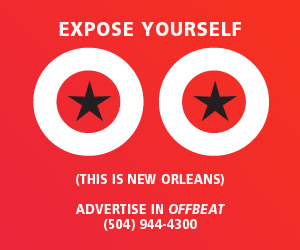St. Paul & the Broken Bones’ second album, Sea of Noise, is even better than Half the City, their widely-acclaimed debut. When touring with the Rolling Stones, Keith Richards noticed lead vocalist, Paul Janeway, as a “cat who can do an Otis Redding.”
This eight-piece Alabama soul band keeps their signature sound, but, as co-writer and bass guitarist, Jesse Phillips, tells us, these new songs “let some of our other influences shine through.” For example, they added a string quartet under the guidance of Lester Snell, famed Stax Records’ string arranger, and included backing vocals by the Tennessee Mass Choir.
Janeway’s voice is as jubilant as any of the brass horns behind him. The band wants this album to offer hope, redemption, and salvation during a time when society around us feels angry and dangerous. Inspired by a Winston Churchill quote, the writing of Equal Justice Initiative’s Brian Stevenson, and all the ancestral rhythm and blues masters who sang what Curtis Mayfield called “message music,” St. Paul & the Broken Bones add their album to the canon.
You went to college in New Orleans, right?
I did. I graduated from Loyola in 2003.
Would you say that had any musical influence on you?
Yeah [laughs]. I came to school a fresh face out of high school in ‘98 straight out of the sticks in British Columbia and Montana—is where I grew up. So, I mean, I hit the ground running, you know. I was going to shows all the time and hadn’t ever really had that opportunity before. I would just wander around the city, pick names off flyers that were stapled to lampposts and stuff. I was always talking to people, always hanging out down on Frenchmen Street.
I saw some cool stuff right after I got there. I saw like Galactic’s CD release party for Crazyhorse Mongoose [1998] on a riverboat. I saw like Herbie Hancock and the original Headhunters, you know. I saw the Funky Meters—a bunch of shows the first two weeks I was there that was pretty mind-warping for an 18-year-old [laughs], you know, from the sticks.
You’re the only member of St. Paul and the Broken Bones who’s not from Alabama. But, like a lot of small Alabama towns, your hometown had only about a 1000 people. How was it growing up at the northern border?
Everybody else in the band is an Alabama native. I’m—I think—an assimilated Alabama resident now. I’ve been here for about 10 years. But yeah, that’s correct, my parents live in British Columbia, in a very rural ranching community. This is the kind of thing where there’s probably more horses and cows than people out there. So our community school went up to the sixth grade and, after that, you had to choose either bussing 45 minutes to the north to the nearest Canadian school or 25 minutes to the south to the nearest American school. I went south to junior high and high school in Montana. It’s beautiful, but if you want to go to a funk show you’ll have to travel a ways.
With Sea of Noise you’ve said that you wanted to move away from being an Otis Redding soul revival band. How would you define St. Paul’s sound now?
I don’t think it’s the kind of thing that you want to leave behind, because that’s where your roots are. But I think we were worried that we were maybe in danger of being pigeon-holed as a straight retro-revivalist act, almost like a novelty act. So we decided that we’d allow ourselves to be a little looser with it because we’re an R&B band, for sure. But, whereas, you know, maybe what some folks do, like people on the Daptone label—what they do is very, very academically correct to the tradition. Their recording techniques, their tones, and their instruments, and the way their records sound and everything is very, very much studied. They’re almost scientists in the way they’re able to reproduce some of those tones. They’re already doing that better than anybody else probably can, and it doesn’t make sense for people like us to also—who are also influenced by other things that aren’t in that strict definition, you know?
I came to New Orleans the other day and saw the Radiohead show at the Smoothie King Arena. And just—it goes all the way back to when The Bends came out in what, ‘95 or something [laughs], you know? They were a huge band for me back in the day. It feels like now we’re in a position now that it makes more sense to let some of our other influences shine through a little bit. You want to hang onto your identity. You don’t want to alienate your audience, but you want to allow yourselves to explore the definitions of what it means to be an R&B band.
And you still use the horns in most songs, but there’s a lot more strings. And maybe a few songs that I don’t hear any horns. Can you tell us about choosing your instrument arrangements?
We were looking for a way—you know, horns can be very bright and jubilant. It’s kind of hard to figure out how to use them in a little darker, more cinematic fashion. And I think that’s what we were going for on the new record. So we were experimenting with ways we could make the horns almost sound more orchestral and less like, just less stab-and-punch-you-in-the-face, you know, answering the vocal line like soul bands typically do—which is awesome. It’s just we wanted to try to use them in a little more variety, I guess, in the context of the songs. They do appear on most of the songs, but some of it is a lot more subtle that it used to be.
We finally had the opportunity to use an awesome Memphis-based string arranger named Lester Snell who worked on a bunch of the old Stax stuff.
Like Isaac Hayes, the Staples Singers, and Albert King?
Yeah, correct. A bunch of folks back in the day. So we had a couple of tunes we thought were appropriate to get him involved in with. He’s the real deal. So we might as well take a swing at that while we have the opportunity.
And y’all recorded some in the Stax Museum, right?
We did, yep. We had the Tennessee Mass Choir come and sing on a couple songs and record there in the big room of the Stax Museum, which was pretty awesome.
Which songs are they on?
There’re on the “Crumbling Light Post” interludes. One of the others is called “Waves,” and the other one is the single off the record, “All I Ever Wonder.” The chorus is [sings] “I don’t know what side I’m on,” and then the choir answers. So they’re on three songs on the record.
Y’all worked with Paul Butler who’s produced albums for Michael Kiwanuka and also Hurray for the Riff Raff. How was it working with Paul Butler?
He’s awesome, man. He hadn’t done much in the United States yet. I think he was just in the process of getting moved over here and now he’s in California full time. But he’s from the Isle of Wight. We were really interested in his technique that he—or somebody in the press has—called “retro-modern” where you do have this kind of like attention to detail and organic quality and warmth. That is old school. But you still embrace the utilization of modern technologies to help you achieve that. He’s awesome, man. He gets the vibe of the song and gets inside of it and pushes you as far as he can as a band into like living inside that sonic atmosphere. And I think for the most part it yielded exceptional results.
After writing “I’ll Be Your Woman,” you said you could die happy because you’ve made a song that’s up to your standards. What do you mean by that? And what’s it about? What are you trying to achieve with that one?
In my mind, our band has two varieties of songs—or two different perspectives when we write songs. One variety of song is the kind of thing that’s basically a song because our band wills it to exist, you know what I mean? It’s sort of a flexing of the muscles of the players and the musicality in the band, and the interplay between the band. It’s not something that somebody’s gonna be able to sit down with an acoustic guitar at home and just play the chords to and sing [laughs]. On the flipside, you have songs that are actually—in terms of their actual harmonic and melodic content—they’re fairly simple and somebody could easily sit down and play the chords.
I just feel like everything came together properly on that song. I think the delivery is really, really cool. It feels good. But it is ultimately a really simple song, harmonically. I think the string parts came together really well and really helped to add weight to that tune. And I think Paul did an exceptional job on the lyrics. There’re so many levels on that tune. It’s a love song, you know, but it’s also turning some of these gender normative things on their head and upside down.
It starts out with the woman rescuing him, but, to keep her, he promises to be as strong as she is.
Yeah, that’s one that came together better than I was imagining that it could. It’s satisfying to listen back and be like, “Hey [laughs], we made this.”
The “Crumbling Light Post” comes from a Winston Churchill quote, and Paul Janeway said that Bryan Stevenson’s book, Just Mercy, inspired the direction of Sea of Noise. Do you feel that creating art is a way to comment on the times, or to influence it, and is that what you’re doing with this record?
I think that sometimes when artists try to get involved in politics or having a message in their music, it can be a little heavy-handed, you know? I think it’s a lot more fun to sort of artfully play with things. Take your craft seriously, but don’t take yourself too seriously. I think what Paul has done exceptionally well on this record—especially with the lyrics—is to illustrate and highlight the struggles of being a person who’s more concerned with progressivism and social justice in a place like Alabama that’s not always the most progressive, forward leaning place. But Paul is as Alabama as you can be. He’s “Roll Tide” to the core, you know [laughs]. He loves barbeque and loves being home in Alabama, and raised in the church.
There’s a lot of religious overtones in St. Paul’s music.
Yeah, and a lot of stuff he retains from his heavily Christian-indoctrinated upbringing is really the more liberal side of the church: the loving, social justice, take care of your brother, your fellow man, more the tolerance kind of thing that seems to be nearest and dearest to his heart. The record is less a political statement and more just an expression of frustration that we can’t get it together on some of these most basic humanitarian levels, you know? It’s sort of a process of asking questions and highlighting challenges and issues that we’re facing. But he’s definitely not trying to tell anybody to think a certain way. It’s just sort of expressing frustration at the turmoil and lack of constructive discourse in society right now. I think the record has turned out to even be a little more relevant than we realized it would be since we made it all prior to the election. Things just keep getting stranger since then.
And if there’s ever a city that knows how the musical arts bring people together, it’s New Orleans, right?
Yeah, man. 100 percent. I love playing in New Orleans. I always look forward to having a reason to get back down and hang out.
And if you can’t dance to St. Paul and the Broken Bones, something’s wrong with you.
Yeah, well, at the end of the day you should always be able to dance yourself free. Go to a show.
St. Paul & The Broken Bones will headline the Orpheum Theater on Thursday, April 27 before headlining Tipitina’s on Friday, April 28.





